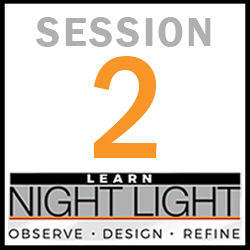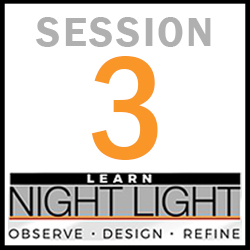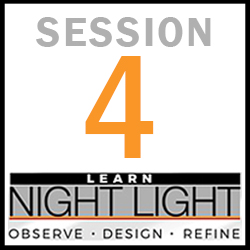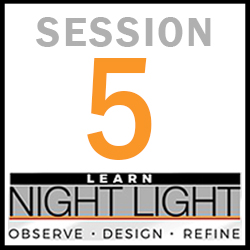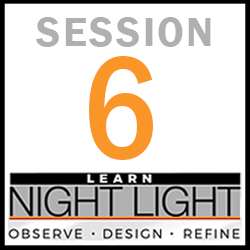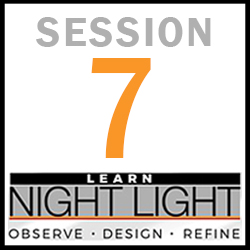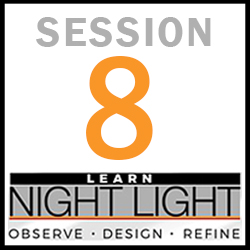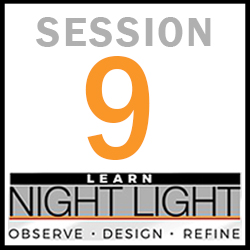
Learn Night Light, Course 1
-
Register
- Non-member - $400
- Member - $350
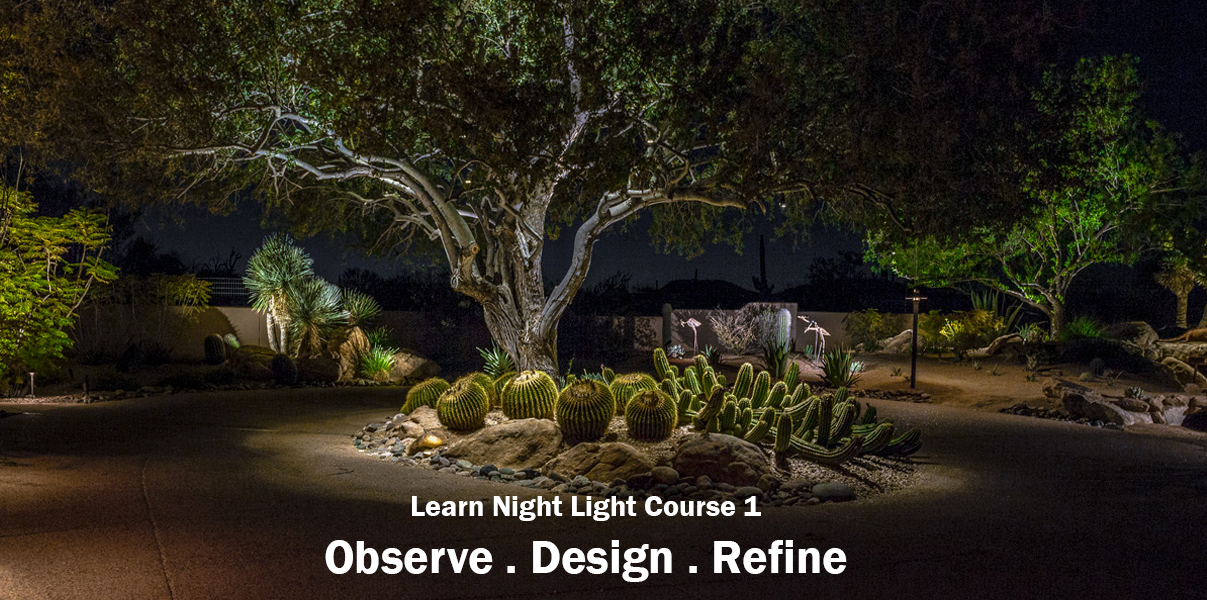
About Course 1 Learn Night Light with Janet Lennox Moyer
It gets dark every night. This collection of twenty training sessions, provides the groundwork necessary for lighting professionals to create safe and pleasing night environments. Designer and Author Janet Lennox Moyer shares her knowledge and what she discovered on thousands of lighting design projects over her 48-years in-the-field experience.
Objectives:
At the end of these courses, participants will be able to:
- Recognize landscape lighting differences from other types of lighting.
- Understand the secret of the science and art behind illumination.
- Understand humans’ perception of light and how we use light to guide people through nighttime landscape spaces.
- Elevate your capacity and expand your creativity with landscape lighting.
- Select the right lighting equipment using LED technology.
- Create lighting design plans tailored to your clients’ needs.
Armed with fundamental tools and techniques, Learn Night Light will help you create effects that produce stunning, useable, and sustainable night scenes for your clients.
SAVE $100 when you register for both courses. Use code: LNLSAVE at checkout.
Watch the Course Trailer:
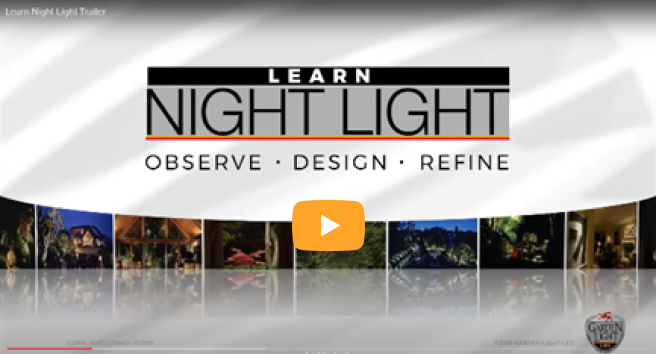
Session Themes:
Session 1: Composition Elements
Session 2: Creating a Sense of Depth
Session 3: Lighting Structures and Buildings
Session 4: Lighting Art
Session 5: Lighting Objectives and Expression
Session 6: Plant Lighting Guidelines
Session 7: View Out Windows and/or Across Garden
Session 8: How Light Stimulates the Human Eye/Brain
Session 9: Using Shadows
Session 10: Lighting Water Features
Courses Structure and Resources:
Each of the ten individual sessions (featuring a video, workbook, and quiz) can be completed at your own pace. We recommend downloading the workbook for each session before watching the corresponding video. As you watch the videos, the workbook can be used as a guide to the concepts covered in the session. Utilize the workbook, and your own notes and observations to take the quiz for each session. Upon successful completion of the quiz at the end of each session (you have unlimited attempts), you will unlock the next session in the course. Each session must be watched in order, but once you've completed one, you can revisit it as many times as you'd like to.
Courses Completion Guide:
- Activate Session 1 or 11. Download the workbook, watch the video, and pass the quiz.
- After each completed quiz, move on to the next module by clicking BACK TO PACKAGE and activating the next session in order.
- Repeat the process of activating, viewing the session, downloading the workbook, viewing the video, and completing the quiz.
- After completing session 10 and/or 20, a CEU certificate of completion will be available for immediate download.
Continuing Education:
Course 1 (Sessions 1-10) and Course 2 (Sessions 11-20) are each registered for continuing education credits with IES, ASLA, and AIA. Upon completion of both courses, earn 20 IES CEU, 20 LA CES, and 20 AIA LU.


COURSE 2COURSE HOMEPAGE
-
Contains 3 Component(s)
Rather than sticking light fixtures here and there, the design tools of composition provide us the opportunity to create a beautiful scene through our windows; to provide our clients with a comfortable patio outdoor room to relax in; public gathering spaces that reveal the beauty of our local landscapes. This session looks at the issues of revealing night spaces and opportunities that lighting offers.
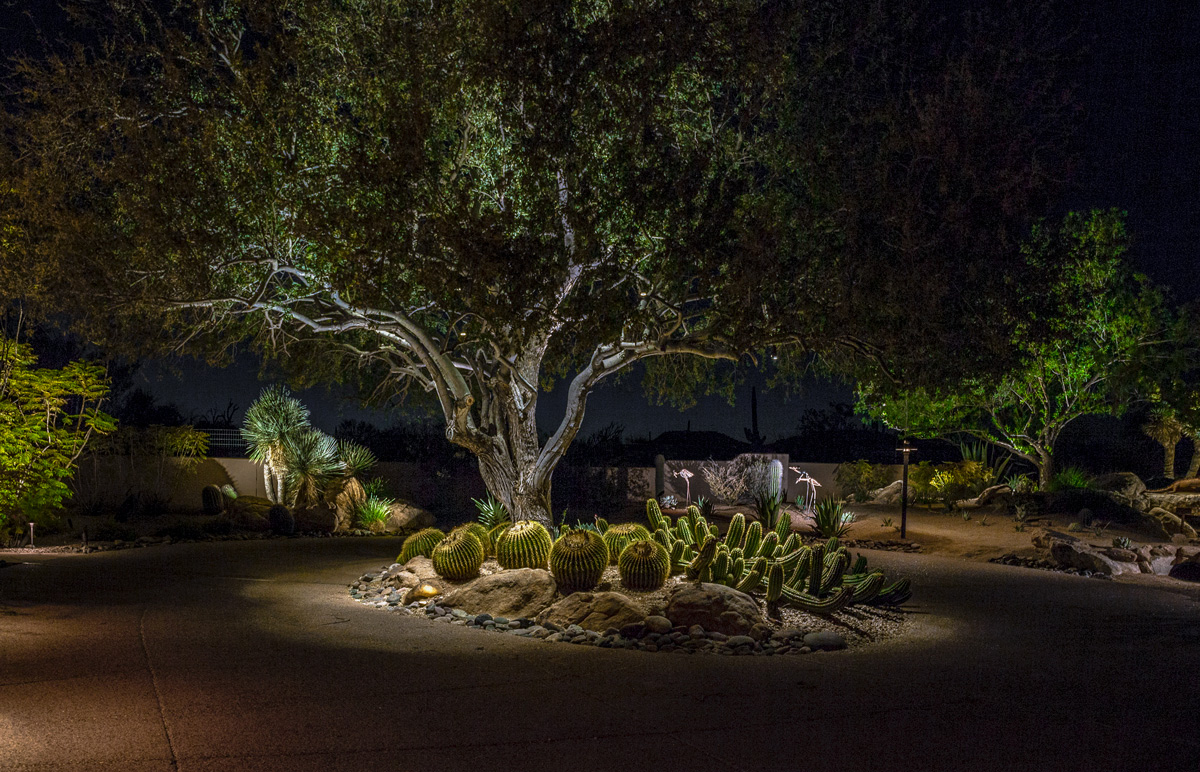
SESSION 1:
Rather than sticking light fixtures here and there, the design tools of composition provide us the opportunity to create a beautiful scene through our windows; to provide our clients with a comfortable patio outdoor room to relax in; public gathering spaces that reveal the beauty of our local landscapes. This session looks at the issues of revealing night spaces and opportunities that lighting offers.
-
Contains 3 Component(s)
Light has the ability to make a space feel larger or smaller depending on how layers of light are introduced. This session will look at using light level hierarchy to manipulate the appearance and feeling of a space.
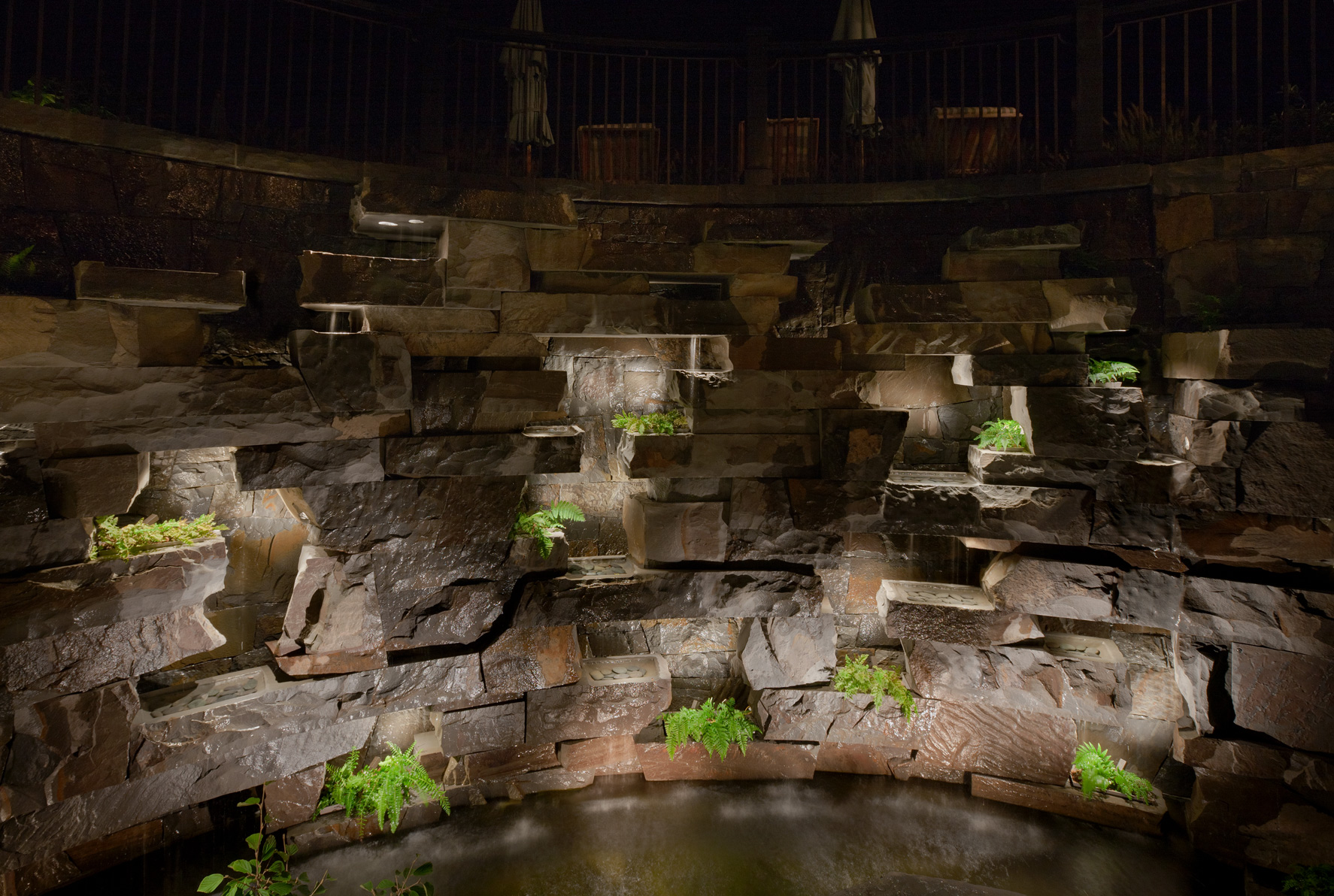
Key Concepts in Session 2:
- Varying light level to expand or contract space
- Lighting the scene's boundary or background
- Creating an outdoor room
- Using brightness variation as hierarchy to provide visual balance
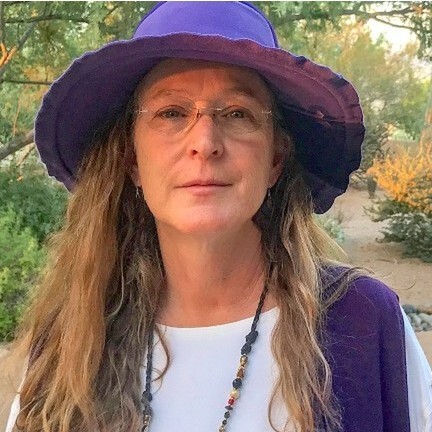
Janet Lennox Moyer, FIALD, AOLP COLD
Lighting Designer, Founder of ILLI
Janet Lennox Moyer Design
Jan began her lighting design career in 1976. She began specializing in landscape lighting in the mid 1980s and wrote the essential book used around the world, The Landscape Lighting Book, first released in 1992 and now in its third edition (Wiley, 2013). Over her career, she has worked on projects large and small, from the Defense Intelligence Agency’s first home in Washington, DC, to winery caves, entertainment gardens, and botanical gardens.
Jan has taught lighting design since undergraduate school at UC Berkeley, Rutgers, and the Lighting Research Center, among others. She founded the International Landscape Lighting Institute (ILLI), a 501(c)(3) educational non-profit organization that provides landscape lighting education classes in the U.S. and abroad.
Jan has written countless articles and been included in multiple books on lighting. Her husband, George Gruel, produced a book of Jan’s lighting projects called She Paints with Light to help people visualize landscape lighting. Currently, she is producing a set of 20 videos with Garden Light LED for a new educational platform called Learn Night Light. In addition, she has begun work on a full-color design book, The Art of Landscape Lighting: A Designer’s Companion, which will provide inspiration for designers through her learnings over more than 45 years of lighting design. It is scheduled for a fall 2021 release.
-
Contains 3 Component(s)
Structures—trellises, pavilions, fences/walls, and buildings—represent one or more elements in a landscape that need to be integrated into the overall scene. Lighting can interpret the relationship of masses, planes, and building detail. We can choose to emphasize or redefine the appearance to support the overall visual composition. This session will look at various options and techniques.

Key Concepts in Session 3:
- Using light to state a building's purpose
- What makes bad building lighting
- Lighting around the building for context
- Using the building as a mounting source
- Look at multiple techniques for massive structures
- Introducing color and/or drama on buildings
- Lighting techniques to enhance texture
- Using trees as a mounting source
- Silhouetting for emphasis
- Grazing versus Washing a surface

Janet Lennox Moyer, FIALD, AOLP COLD
Lighting Designer, Founder of ILLI
Janet Lennox Moyer Design
Jan began her lighting design career in 1976. She began specializing in landscape lighting in the mid 1980s and wrote the essential book used around the world, The Landscape Lighting Book, first released in 1992 and now in its third edition (Wiley, 2013). Over her career, she has worked on projects large and small, from the Defense Intelligence Agency’s first home in Washington, DC, to winery caves, entertainment gardens, and botanical gardens.
Jan has taught lighting design since undergraduate school at UC Berkeley, Rutgers, and the Lighting Research Center, among others. She founded the International Landscape Lighting Institute (ILLI), a 501(c)(3) educational non-profit organization that provides landscape lighting education classes in the U.S. and abroad.
Jan has written countless articles and been included in multiple books on lighting. Her husband, George Gruel, produced a book of Jan’s lighting projects called She Paints with Light to help people visualize landscape lighting. Currently, she is producing a set of 20 videos with Garden Light LED for a new educational platform called Learn Night Light. In addition, she has begun work on a full-color design book, The Art of Landscape Lighting: A Designer’s Companion, which will provide inspiration for designers through her learnings over more than 45 years of lighting design. It is scheduled for a fall 2021 release.
-
Contains 3 Component(s)
Art can serve multiple purposes in landscape lighting. This session will discuss potential roles that art can take and the relation to other elements in the overall visual composition. Techniques for art can vary as much as the art. We will provide guidelines to help you plan how to assess and what techniques to consider.
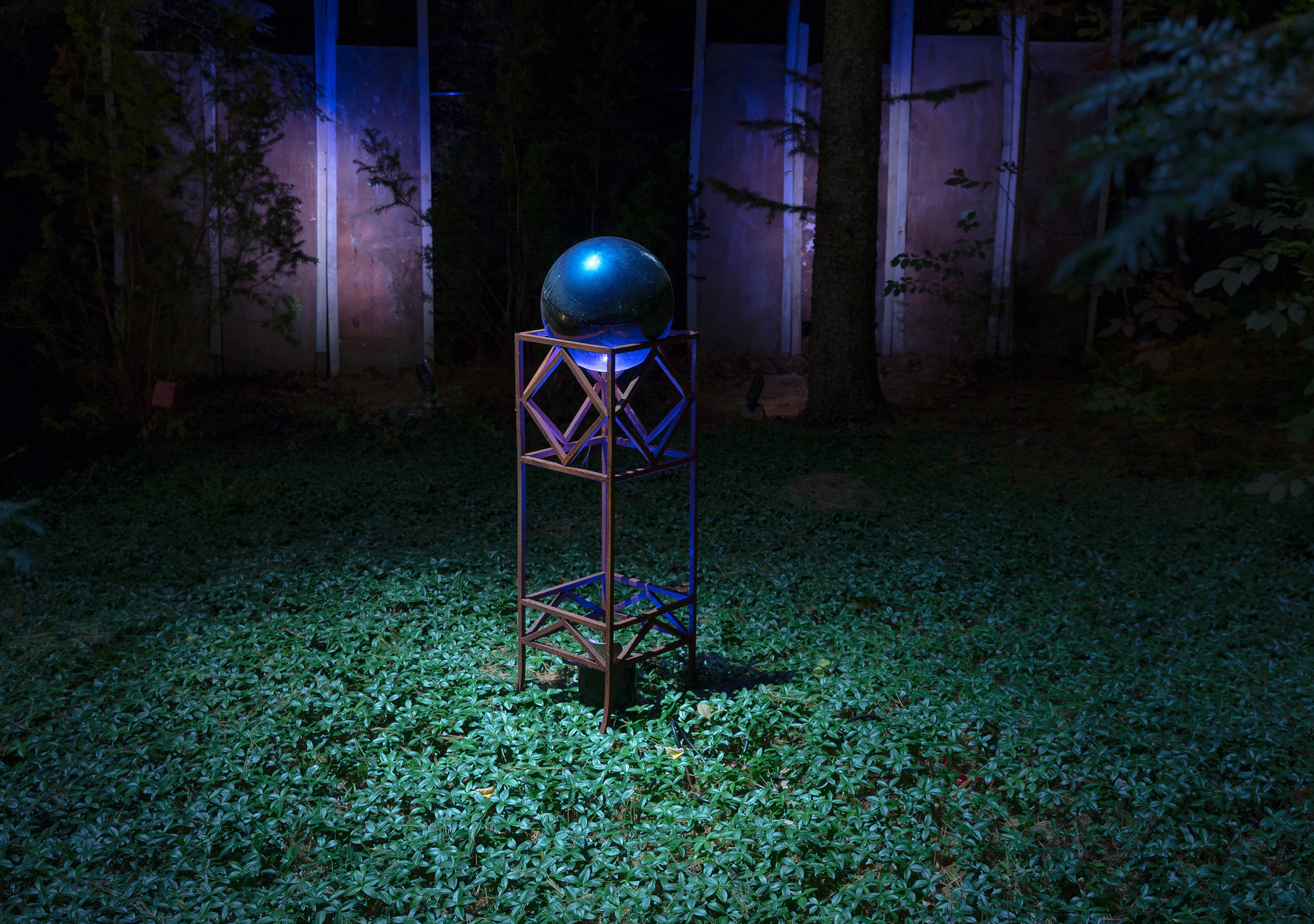
Key Concepts in Session 4:
- Art’s function in a lighting scene
- Understanding art’s color and reflectance
- Using darkness for emphasis
- Using art for visual destination
- Showing detail for realism
- Techniques for ‘sets’
- Treating multiple versus single sculptures
- When to use color on art
- Technique for lighting black or very dark art
- Position and Use of Sculpture in lighting scenes
- Planning for art not in place yet
- Integrating Wall Art
- Remember composition

Janet Lennox Moyer, FIALD, AOLP COLD
Lighting Designer, Founder of ILLI
Janet Lennox Moyer Design
Jan began her lighting design career in 1976. She began specializing in landscape lighting in the mid 1980s and wrote the essential book used around the world, The Landscape Lighting Book, first released in 1992 and now in its third edition (Wiley, 2013). Over her career, she has worked on projects large and small, from the Defense Intelligence Agency’s first home in Washington, DC, to winery caves, entertainment gardens, and botanical gardens.
Jan has taught lighting design since undergraduate school at UC Berkeley, Rutgers, and the Lighting Research Center, among others. She founded the International Landscape Lighting Institute (ILLI), a 501(c)(3) educational non-profit organization that provides landscape lighting education classes in the U.S. and abroad.
Jan has written countless articles and been included in multiple books on lighting. Her husband, George Gruel, produced a book of Jan’s lighting projects called She Paints with Light to help people visualize landscape lighting. Currently, she is producing a set of 20 videos with Garden Light LED for a new educational platform called Learn Night Light. In addition, she has begun work on a full-color design book, The Art of Landscape Lighting: A Designer’s Companion, which will provide inspiration for designers through her learnings over more than 45 years of lighting design. It is scheduled for a fall 2021 release.
-
Contains 3 Component(s)
Landscape lighting has three basic objectives—safety, security, and aesthetics. Creating a pleasing environment out of the darkness requires effective expression of visual design. This session will address how to start making decisions and introducing light to create your desired lighting effects.
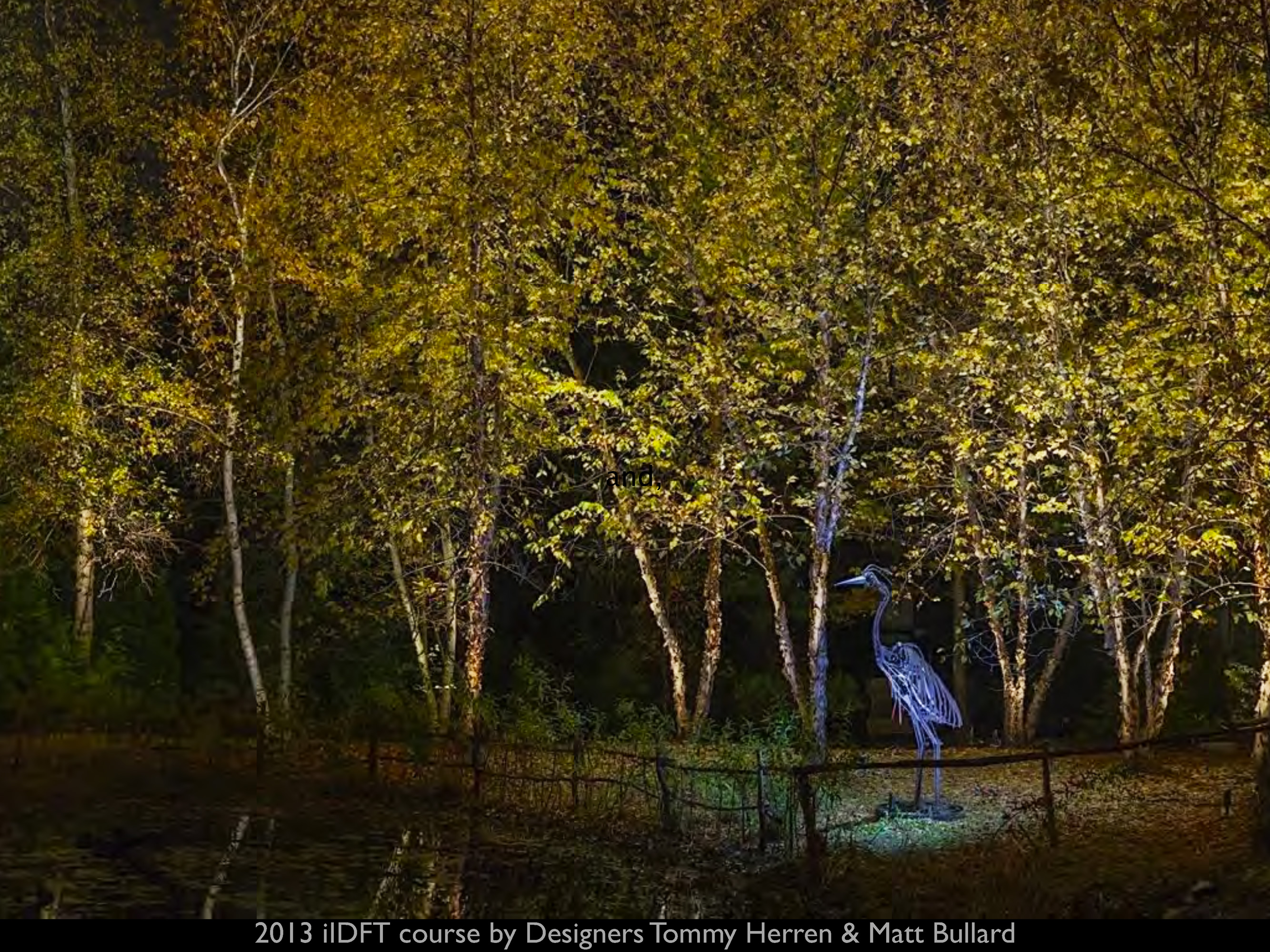
Key Concepts in Session 5:
- Primary objectives: safety and security through aesthetic treatment
- How light provides a sense of safety
- How light addresses security
- Using aesthetic approach
- Providing "view” out a window to complete an interior space
- Understanding "quality" of lights
- Soft versus harsh light as a tool
- Using color to create environment
- Understanding how even and uneven balance affect a scene
- Understanding visual cohesion and how to create it

Janet Lennox Moyer, FIALD, AOLP COLD
Lighting Designer, Founder of ILLI
Janet Lennox Moyer Design
Jan began her lighting design career in 1976. She began specializing in landscape lighting in the mid 1980s and wrote the essential book used around the world, The Landscape Lighting Book, first released in 1992 and now in its third edition (Wiley, 2013). Over her career, she has worked on projects large and small, from the Defense Intelligence Agency’s first home in Washington, DC, to winery caves, entertainment gardens, and botanical gardens.
Jan has taught lighting design since undergraduate school at UC Berkeley, Rutgers, and the Lighting Research Center, among others. She founded the International Landscape Lighting Institute (ILLI), a 501(c)(3) educational non-profit organization that provides landscape lighting education classes in the U.S. and abroad.
Jan has written countless articles and been included in multiple books on lighting. Her husband, George Gruel, produced a book of Jan’s lighting projects called She Paints with Light to help people visualize landscape lighting. Currently, she is producing a set of 20 videos with Garden Light LED for a new educational platform called Learn Night Light. In addition, she has begun work on a full-color design book, The Art of Landscape Lighting: A Designer’s Companion, which will provide inspiration for designers through her learnings over more than 45 years of lighting design. It is scheduled for a fall 2021 release.
-
Contains 3 Component(s)
Plants take many shapes and sizes and fill many roles in landscape design and landscape lighting. It is critical to understand plants and how they change over time. This session will discuss plant characteristics and the multitude of ways to light them to express their beauty as part of the scene.

Key Concepts in Session 6:
- Understanding the characteristics of the plants to be lit
- A plant's role in the composition
- Three basic tree-lighting techniques
- Producing three-dimensional appearance
- Understanding fixture location to show plants best
- Importance of knowing the genus, species, & variety of all project plants
- Learning how tree shape changes as the tree matures
- Issues regarding deciduous and evergreen trees
- Importance of downlighting for plants
- Understanding what uplighting, downlighting, and the combination does for plants
- Dense versus open canopies
- The importance of pruning for plant lighting
- How time can change a plant's role

Janet Lennox Moyer, FIALD, AOLP COLD
Lighting Designer, Founder of ILLI
Janet Lennox Moyer Design
Jan began her lighting design career in 1976. She began specializing in landscape lighting in the mid 1980s and wrote the essential book used around the world, The Landscape Lighting Book, first released in 1992 and now in its third edition (Wiley, 2013). Over her career, she has worked on projects large and small, from the Defense Intelligence Agency’s first home in Washington, DC, to winery caves, entertainment gardens, and botanical gardens.
Jan has taught lighting design since undergraduate school at UC Berkeley, Rutgers, and the Lighting Research Center, among others. She founded the International Landscape Lighting Institute (ILLI), a 501(c)(3) educational non-profit organization that provides landscape lighting education classes in the U.S. and abroad.
Jan has written countless articles and been included in multiple books on lighting. Her husband, George Gruel, produced a book of Jan’s lighting projects called She Paints with Light to help people visualize landscape lighting. Currently, she is producing a set of 20 videos with Garden Light LED for a new educational platform called Learn Night Light. In addition, she has begun work on a full-color design book, The Art of Landscape Lighting: A Designer’s Companion, which will provide inspiration for designers through her learnings over more than 45 years of lighting design. It is scheduled for a fall 2021 release.
-
Contains 3 Component(s)
Night lighting creates outdoor spaces and environments for us to experience. This session will look at how lighting reconnects us to our gardens at night by providing views through windows. It will also discuss thinking about views from one area in a garden to another and using light level hierarchy to guide people into and through garden spaces.
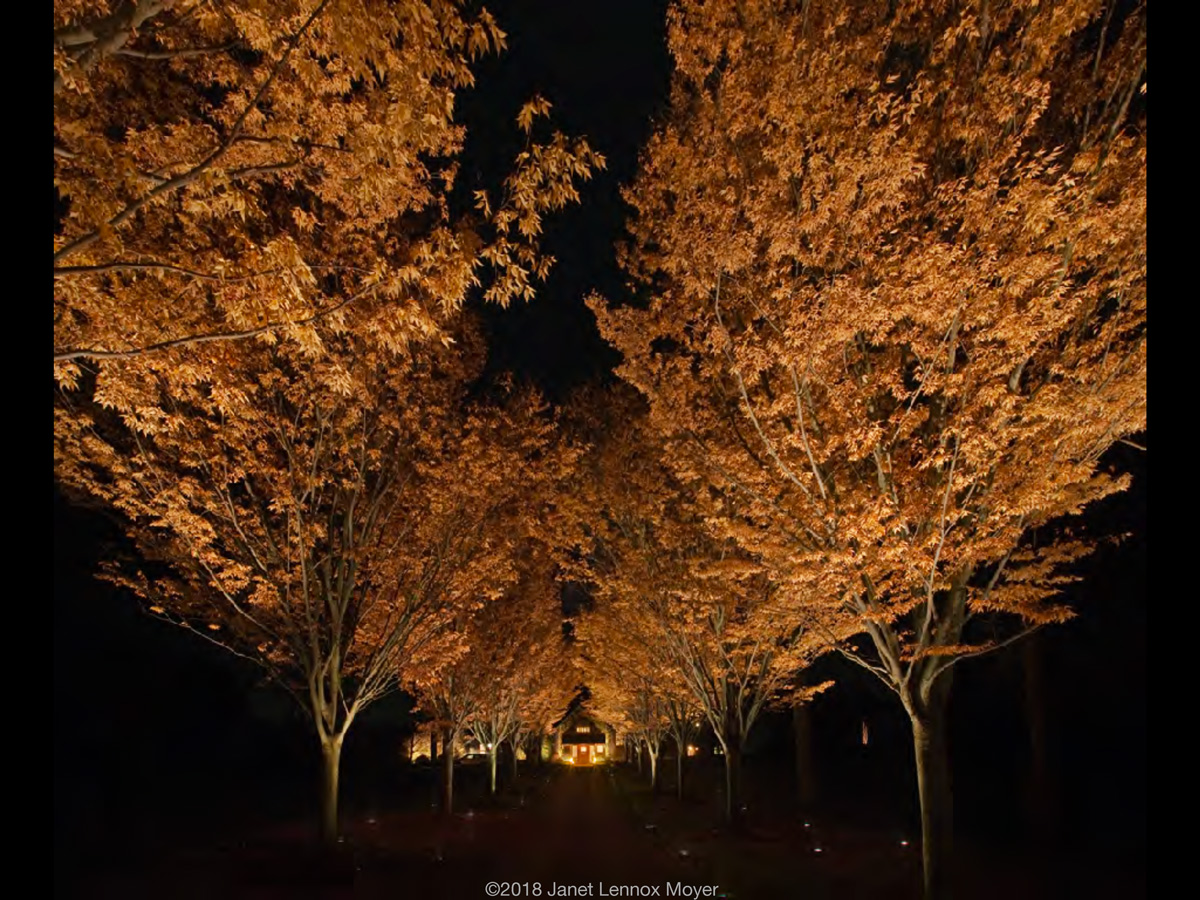
Key Concepts in Session 7:
- View connects us to our garden after dark
- Light outside windows makes interior spaces feel larger
- Anything visible outside a window can be lit, regardless of location
- View across a garden - from one area to another
- Understanding the importance of arrival - getting guests to the front door, comfortably
- Large sites require decisions about importance, as do small sites
- Providing light guides to help people navigate spaces

Janet Lennox Moyer, FIALD, AOLP COLD
Lighting Designer, Founder of ILLI
Janet Lennox Moyer Design
Jan began her lighting design career in 1976. She began specializing in landscape lighting in the mid 1980s and wrote the essential book used around the world, The Landscape Lighting Book, first released in 1992 and now in its third edition (Wiley, 2013). Over her career, she has worked on projects large and small, from the Defense Intelligence Agency’s first home in Washington, DC, to winery caves, entertainment gardens, and botanical gardens.
Jan has taught lighting design since undergraduate school at UC Berkeley, Rutgers, and the Lighting Research Center, among others. She founded the International Landscape Lighting Institute (ILLI), a 501(c)(3) educational non-profit organization that provides landscape lighting education classes in the U.S. and abroad.
Jan has written countless articles and been included in multiple books on lighting. Her husband, George Gruel, produced a book of Jan’s lighting projects called She Paints with Light to help people visualize landscape lighting. Currently, she is producing a set of 20 videos with Garden Light LED for a new educational platform called Learn Night Light. In addition, she has begun work on a full-color design book, The Art of Landscape Lighting: A Designer’s Companion, which will provide inspiration for designers through her learnings over more than 45 years of lighting design. It is scheduled for a fall 2021 release.
-
Contains 3 Component(s)
Understanding how we see helps us know how to use light in our visual compositions. This session will look at the configuration of the eye, how the eye and brain interact, and the way we can best use light for human comfort and enjoyment.
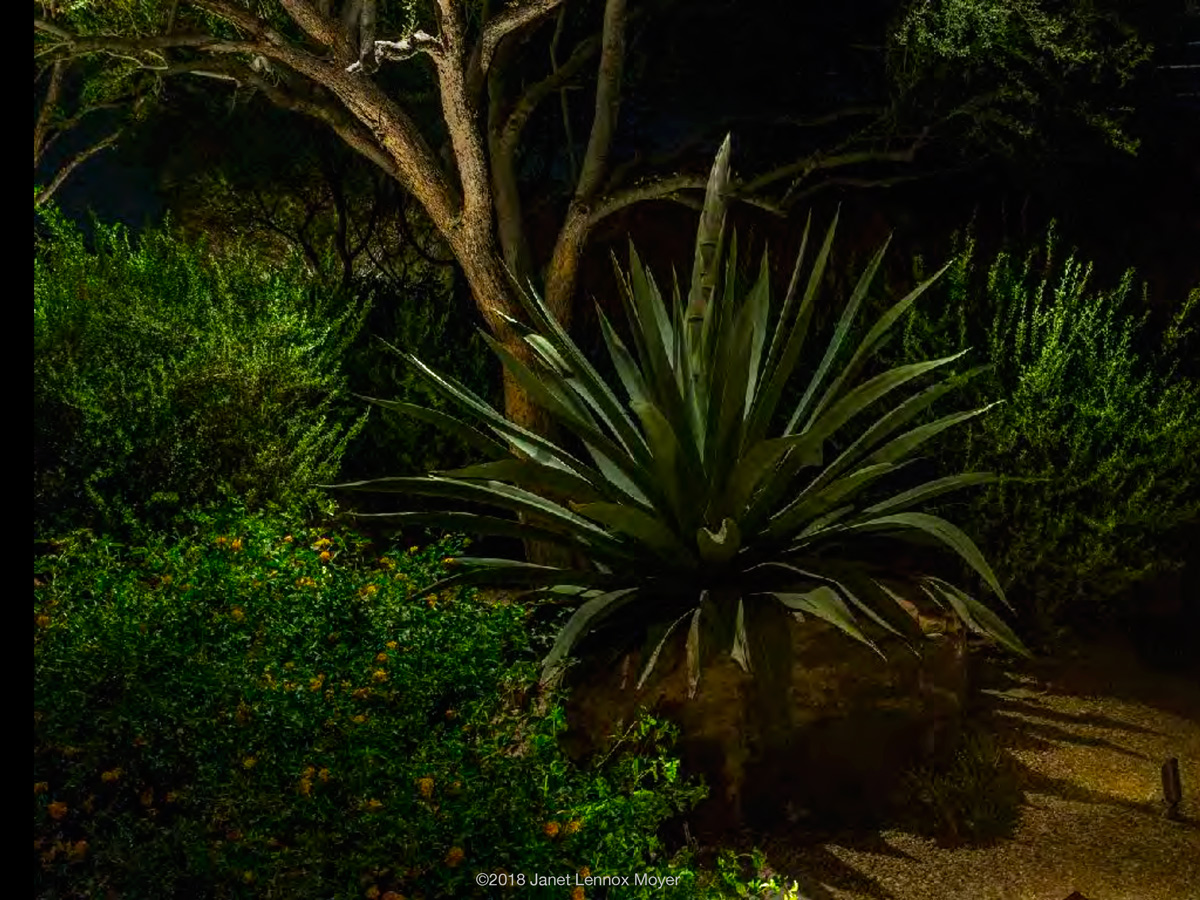
Key Concepts in Session 8:
- Understanding the makeup of the eye and its interaction with the brain
- Role of the rods and cones
- How the eye changes to see varying distance & how that is restricted with age
- Normal field of view
- Photopic, mesopic & scotopic vision light levels
- How light level affects our color perception
- Understanding light level variation and patterning in a space
- Understanding physical obstacles in a night space
- Using light to guide people through space
- How glare impacts lit spaces
- Additive versus subtractive color
- Understanding color temperature and its interaction with objects
- How light sources can vary based on their relationship to the blackbody locus
- Understanding the variety of conditions of daylight
- Light Sensitivity curve for humans and for plants
- LED light and color production varies greatly from old technology sources

Janet Lennox Moyer, FIALD, AOLP COLD
Lighting Designer, Founder of ILLI
Janet Lennox Moyer Design
Jan began her lighting design career in 1976. She began specializing in landscape lighting in the mid 1980s and wrote the essential book used around the world, The Landscape Lighting Book, first released in 1992 and now in its third edition (Wiley, 2013). Over her career, she has worked on projects large and small, from the Defense Intelligence Agency’s first home in Washington, DC, to winery caves, entertainment gardens, and botanical gardens.
Jan has taught lighting design since undergraduate school at UC Berkeley, Rutgers, and the Lighting Research Center, among others. She founded the International Landscape Lighting Institute (ILLI), a 501(c)(3) educational non-profit organization that provides landscape lighting education classes in the U.S. and abroad.
Jan has written countless articles and been included in multiple books on lighting. Her husband, George Gruel, produced a book of Jan’s lighting projects called She Paints with Light to help people visualize landscape lighting. Currently, she is producing a set of 20 videos with Garden Light LED for a new educational platform called Learn Night Light. In addition, she has begun work on a full-color design book, The Art of Landscape Lighting: A Designer’s Companion, which will provide inspiration for designers through her learnings over more than 45 years of lighting design. It is scheduled for a fall 2021 release.
-
Contains 3 Component(s)
My lighting partner, Michael Hooker, always said “Darkness is your friend.” It helps shape and define objects; it can hide unwanted elements; it can help join two areas. We will explore all we can do with shadows and darkness in our lighting.

Key Concepts in Session 9:
- Using downlight to create shadowing in a scene
- Shadows support three-dimensional shaping
- How patterns affect a lighting scene
- Using shadow to create interest
- How seasonal changes in plants affects projected shadow patterns
- Projecting patterns for a purpose
- Differentiation in shadow affect from up lighting versus downlighting
- Sculptures and the use of shadow
- Using light/dark variation across a large tree canopy
- Creating shadows to emphasize textured bark
- Shadows can hide things in a lighting scene
- Using darkness as a tool in a composition

Janet Lennox Moyer, FIALD, AOLP COLD
Lighting Designer, Founder of ILLI
Janet Lennox Moyer Design
Jan began her lighting design career in 1976. She began specializing in landscape lighting in the mid 1980s and wrote the essential book used around the world, The Landscape Lighting Book, first released in 1992 and now in its third edition (Wiley, 2013). Over her career, she has worked on projects large and small, from the Defense Intelligence Agency’s first home in Washington, DC, to winery caves, entertainment gardens, and botanical gardens.
Jan has taught lighting design since undergraduate school at UC Berkeley, Rutgers, and the Lighting Research Center, among others. She founded the International Landscape Lighting Institute (ILLI), a 501(c)(3) educational non-profit organization that provides landscape lighting education classes in the U.S. and abroad.
Jan has written countless articles and been included in multiple books on lighting. Her husband, George Gruel, produced a book of Jan’s lighting projects called She Paints with Light to help people visualize landscape lighting. Currently, she is producing a set of 20 videos with Garden Light LED for a new educational platform called Learn Night Light. In addition, she has begun work on a full-color design book, The Art of Landscape Lighting: A Designer’s Companion, which will provide inspiration for designers through her learnings over more than 45 years of lighting design. It is scheduled for a fall 2021 release.
-
Contains 4 Component(s), Includes Credits
Water and electricity don’t play well together. The NEC has multiple requirements and restrictions based on the type of water body you are working with. We will look at how to approach water and what to be careful about in your design.
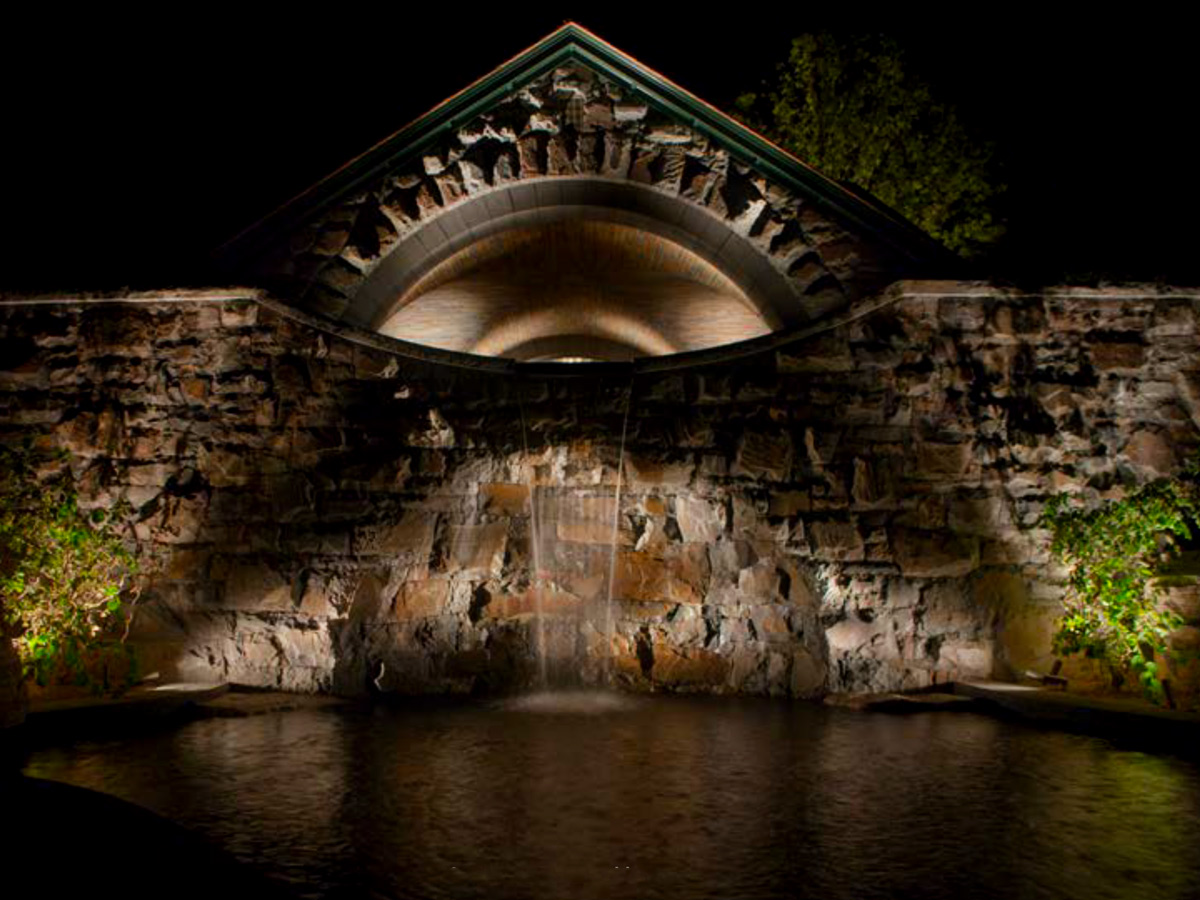
Key Concepts in Session 10:
- Water and electricity don’t mix, lighting water is very difficult
- Understanding light level contrast between water and surrounds
- Importance of hiding electrical equipment from view
- Creating a recessed trough to properly locate and protect lighting equipment
- Understanding smooth and rough weir needs for lighting
- Depth of water scatters and diminishes the effect of light
- Types of underwater fixtures and how/when to use them
- Importance of complete documents for water features
- Importance of correct fixture location to actually create a lighting effect for water
- Difference between up- and downlighting in water lighting
- Using fiberoptic and LED
- Importance of details to get the water lighting effect to work
- Introducing "shore-scraping" and how and when to use it
- Beauty of reflection on a still water surface

Janet Lennox Moyer, FIALD, AOLP COLD
Lighting Designer, Founder of ILLI
Janet Lennox Moyer Design
Jan began her lighting design career in 1976. She began specializing in landscape lighting in the mid 1980s and wrote the essential book used around the world, The Landscape Lighting Book, first released in 1992 and now in its third edition (Wiley, 2013). Over her career, she has worked on projects large and small, from the Defense Intelligence Agency’s first home in Washington, DC, to winery caves, entertainment gardens, and botanical gardens.
Jan has taught lighting design since undergraduate school at UC Berkeley, Rutgers, and the Lighting Research Center, among others. She founded the International Landscape Lighting Institute (ILLI), a 501(c)(3) educational non-profit organization that provides landscape lighting education classes in the U.S. and abroad.
Jan has written countless articles and been included in multiple books on lighting. Her husband, George Gruel, produced a book of Jan’s lighting projects called She Paints with Light to help people visualize landscape lighting. Currently, she is producing a set of 20 videos with Garden Light LED for a new educational platform called Learn Night Light. In addition, she has begun work on a full-color design book, The Art of Landscape Lighting: A Designer’s Companion, which will provide inspiration for designers through her learnings over more than 45 years of lighting design. It is scheduled for a fall 2021 release.

